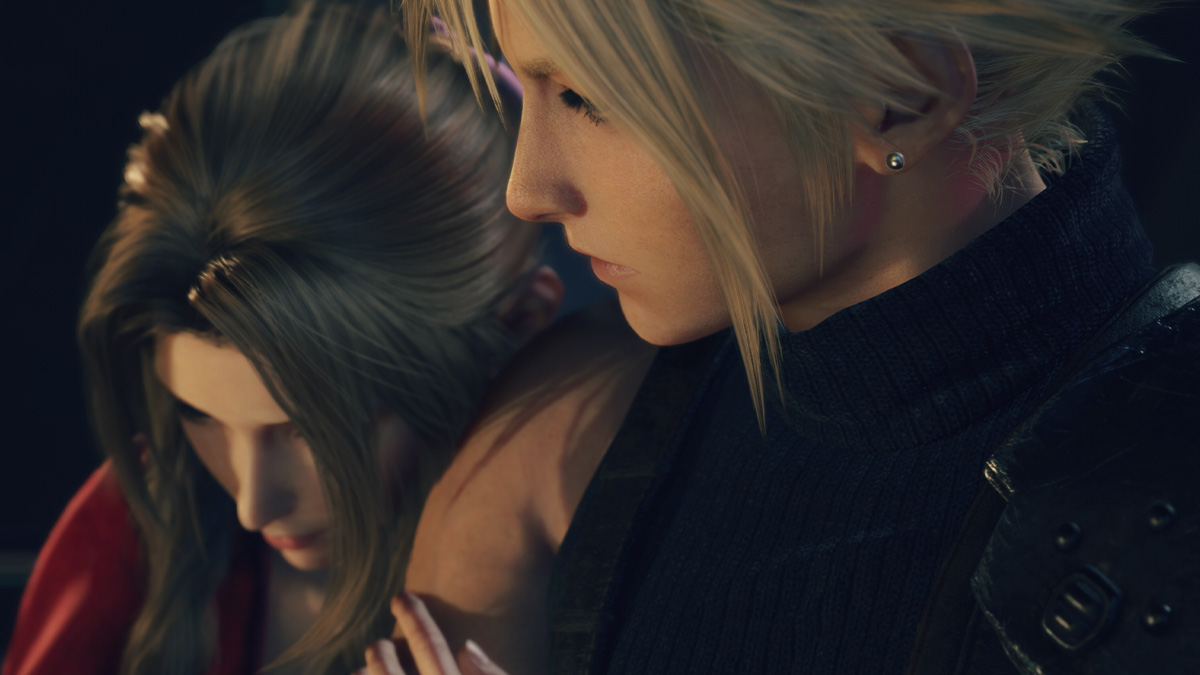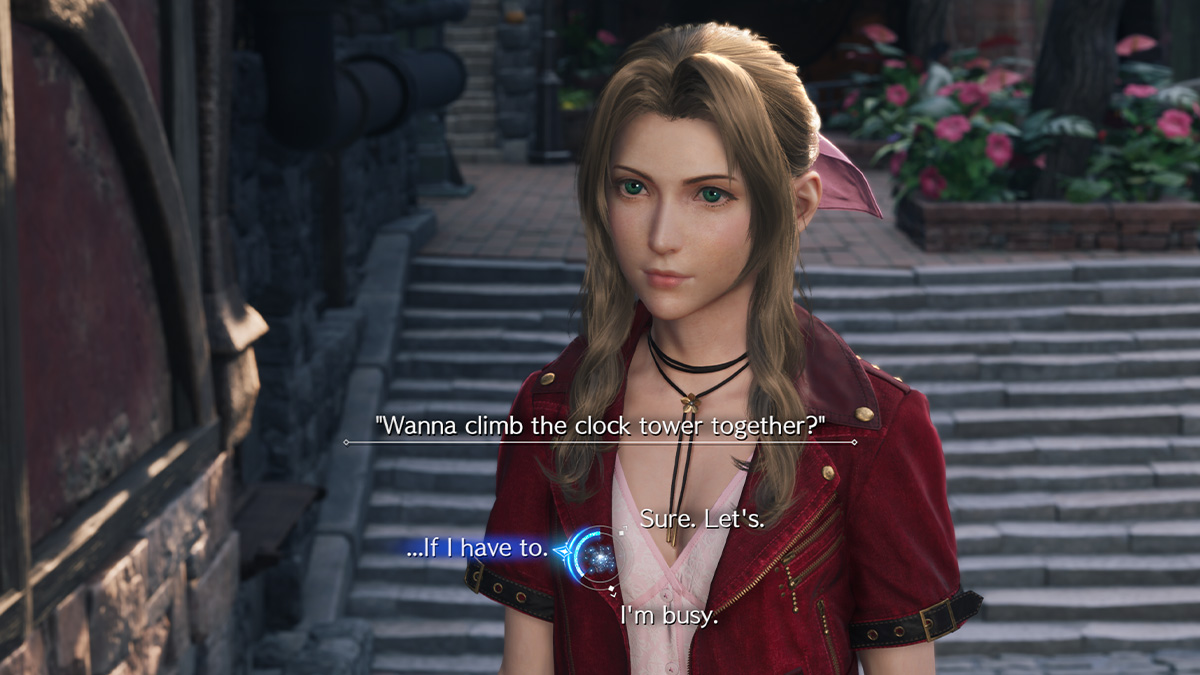![]()
When I first sat down to play the Final Fantasy VII Rebirth TGS demo in September 2023, the first thing that stood out to me was how much work Square Enix put into fleshing out the game's characters. The Synergy ability, in particular, was a highlight, as it really added a lot of depth to the character's personalities. Cloud using Aerith's magic to create a spectacular fireworks display of damage was both an epic cinematic attack in combat and a neat narrative device that says much about their bond.

In January 2024, I played the first five hours of Final Fantasy VII Rebirth in the lead-up to its launch in February. I can say that the game goes even further than I expected to breathe new life into these beloved characters of the 1997 classic. This is evident from the game's opening hours, which is oozing with personality. In Chapter 1, we get to play a flashback of a pivotal moment between Cloud and Sephiroth from five years ago. However, as we progress through the story, Cloud, in real-time, narrates the events while the rest of the group occasionally chimes in with their own commentary.
What is really neat about this narrative decision is that players are given choices in the campaign, which then reflect on the campfire story Cloud is telling. For example, there is a hilarious moment where Cloud reveals that he went into Tifa's room, and you can choose to have him say that he looked into her closet. Based on the decisions you make, the group will either scold Cloud or praise him. This design choice not only allows players to experience the story how they want to but it also creates these dynamic moments between the group that add a lot to their relationships. And I mean, it will never not be funny when Barret chews out Cloud for making the wrong decisions.
There are a surprising amount of these moments where players are given multiple-choice decisions. I won't go into detail about all of them, as I want to leave that as a surprise to players. However, since Cloud is retelling a story from his point of view, there is a lot of room for players to improvise the story with their decisions. The flashback narrative also allows Square Enix to really world-build by creating these little details that say a lot about the characters, especially with how they react to Cloud's perspective.

Perhaps the most surprising addition to Final Fantasy VII Rebirth that I encountered is a new relationship system that is, in a lot of ways, similar to the Social Link mechanic in the Persona series. Each character in the game now has an emotional status that I could view at any time. The feature allows the player to change how a character feels towards Cloud, which can become positive or negative based on your choices. An example is that while I was in the city of Kalm, I found Barret sitting in a bar alone and asked him if he wanted to drink with me. After initially saying no, a timed dialogue tree event was triggered, and I was given three choices. Because I chose to have Cloud offer to buy him a drink, my relationship with Barrett increased, and his feelings toward the protagonist became positive.
As I progressed through the story, there were many moments where I could interact with the characters and improve my relationship with them. If you like your Cloud to be a jerk, it is possible to be cold towards everyone and make decisions that upset them. However, the game has a relationship rank system that impacts the story in a few different ways. If you have a good relationship with certain characters, you can unlock side quests later in the story with them. Having a good bond with everyone also increases your overall party rank, which gives you access to new abilities and skills. I'm not sure if every character moment is optional, but how you react during them at least impacts how they feel about Cloud, which has larger ramifications on the overall game.
This new relationship system was probably my favorite part of the Final Fantasy VII Rebirth preview, as it fleshed out the characters in a really big way. Most importantly, it makes the world feel a lot less static as you can discover these dynamic moments through exploration. In Chapter 2, the game sets you free to explore the Kalm, which is a massive bustling town. Yes, I could have rushed to the main campaign mission marker and progressed the story. But the game's side quests and social system had me wanting to explore every inch of the map to see what I could find. Because of this, the city truly felt alive, and like I could stumble upon something new with every corner I walked down.

Witcher 3 fans that love Gwent will rejoice, as another major feature added to Final Fantasy VII Rebirth is a new card game called Queen's Blood. The game is designed around a board with three lanes moving from left to right. In my play session, I had a deck of cards with various characters in. The way the game works is you have to place a card down that matches the rank level of the open spaces on your board. To start the match, you need to place a level 1 card down, as all the spaces start out at level 1. However, based on each card's unique pattern, you can change the level of the other open spaces on your board. So, for example, a level 1 card might turn the space diagonal to it to rank 2, which then lets you put down a more powerful card. With each card you set down in your lane, its overall power ranking is higher.
The goal of Queen's Blood is to have a higher total than your opponent. When every space on the board is filled up, the game will tally up each lane's overall points and declare a winner. The game has a lot of depth and strategy, as certain characters in your deck can increase the ranking of your other cards already on the board. Like Gwent, you also unlock new cards by defeating opponents. What I really like about Queen's Blood, though, is how it's integrated into the game's world. You can find NPCs who play the card game, and the more characters you beat, the higher your Queen's Blood rank goes up, and the more opponents you gain access to.
Queen's Blood could have just been another side activity, but Square Enix went the extra mile to really give the game personality. For instance, one of my first opponents was a guy named "Crybaby Ned." The NPC literally bursts into tears and claims that the more he cries, the better he plays. The moment gave me flashbacks of being challenged by a trainer in a Pokemon game, which, I'm not gonna lie, is ridiculously awesome. Overall, Queen's Blood is a lot of fun, and I could get lost for hours just playing the TCG. It's easy enough to understand that anyone can jump in while being complex enough that veteran players who know a lot about card games will have much to sink their teeth into.
